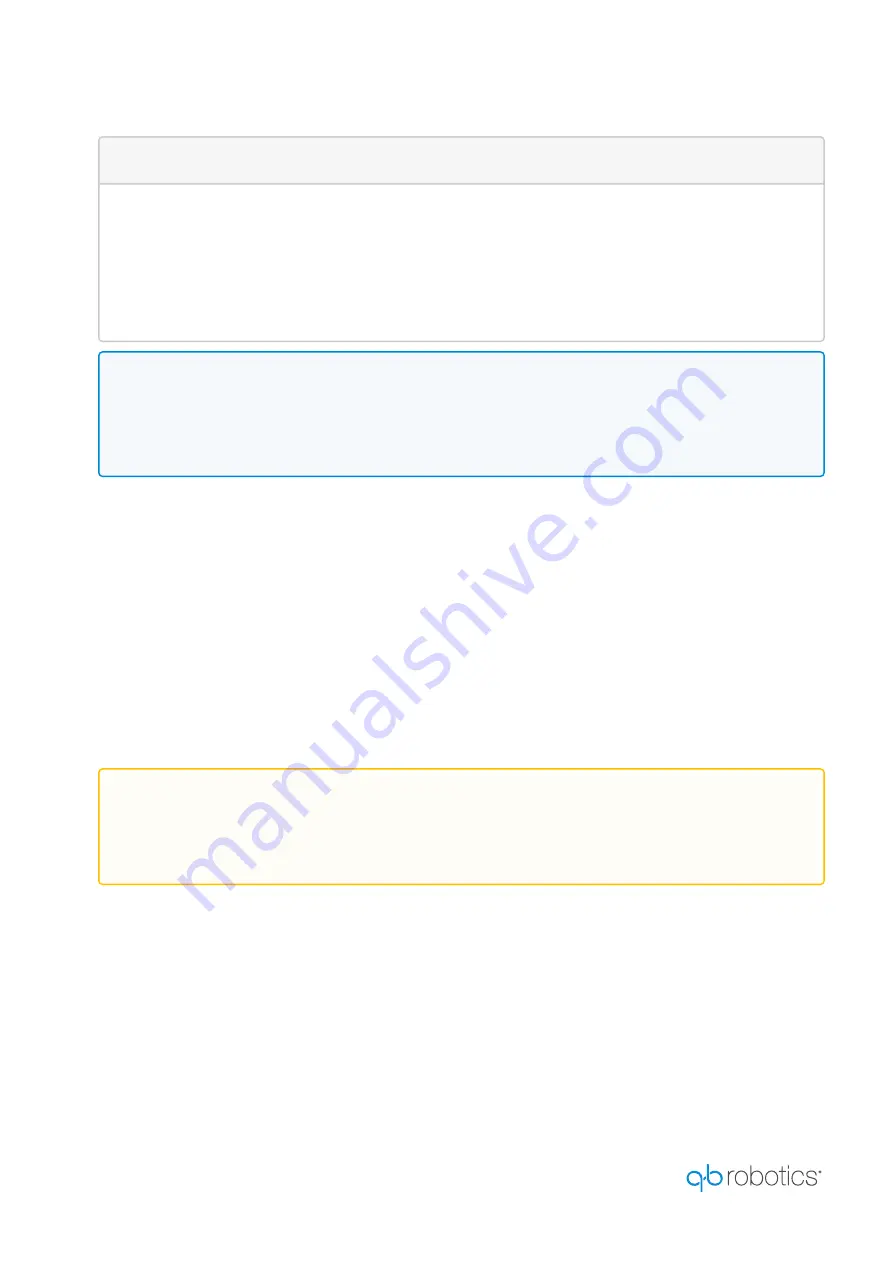
QB SOFTHAND RESEARCH USER GUIDE —
33
•
•
•
UR PROGRAM EXAMPLE
Move L: # not Move J which is linear in joint space
- approach_waypoint
- hand close 40% # this is a pre-grasp
- pick_waypoint
- hand close 75% # this is the real grap on the object
...
Additionally, if you want to smooth the robot motion between waypoints, use the
"Blend
Radius"
option to the given ones. The more you blend, the less the end-effector reaches the teached
waypoint, so be careful and do some trial and error to achieve the right behavior: start with no blend,
i.e. 0, and increment the value until you are satisfied.
Improving robot velocity to be far more impressive! When the hand is properly closed on an object,
you can move the robot even quite fast without losing grip if you have set the waypoints accordingly
(just avoid discontinuities and you are fine).
Last, but
not
least, do
not
always close the hand at its maximum (
100%
): it is adaptable and will do its
job in any way, but it is far better to close the hand around the minimum closure that it is suitable for
the given object. This will lead to a more gentle grasp, which can be really helpful when dealing with
fragile objects. For example, a bottle can be grasped with a closure of something about 60%; if it is not
full, higher values may result in an unwanted squashing of its plastic. A good approach for the very
first times is to increment the closure value gradually until you are confident with our device and the
given object.
8.6 The glove is deteriorated/broken
8.6.1 Problem
The glove is one of the component of the hand
more prone
to wear and tear.
The planned maintenance already makes up for this, but it may happen that the glove simply breaks
during the normal usage.
NOTE:
Pre-grasp waypoints are very useful, especially when you need to enter in a narrow space,
e.g. to grasp a door handle.
It is worth noting that you can add as many pre-grasps as you want!
WARNING:
As a rule of
thumb,
"you should close the hand at the minimum value that lets you
perform the task"
. Therefore go incrementally from 40-50% to 80-85% (values above 85%
are to be considered only for very small objects).


































